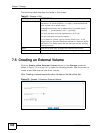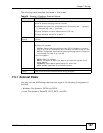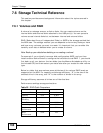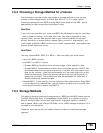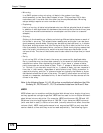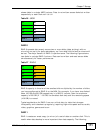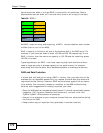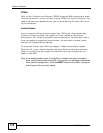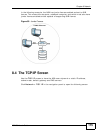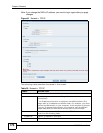
Chapter 7 Storage
NSA320 User’s Guide
169
7.6.2 Choosing a Storage Method for a Volume
The following is a guide to help you choose a storage method for the various
number of disks supported on the NSA. See Section 7.6.3 on page 169 for
theoretical background on JBOD and the RAID levels used on the NSA. Typical
applications for each method are also shown there.
One Disk
If you only have one disk, you must use JBOD. All disk space is used for your data
- none is used for backup. If the disk fails, then you lose all the data on that
volume (disk). You can add another disk to your one-disk JBOD volume later
without having to re-create shares, access rights, and so on. Alternatively, you
could create a different JBOD volume if you install a second disk. (and create new
shares, access rights and so on).
Two Disks:
You may choose JBOD, RAID 0 or RAID 1. With two disks you could create:
• up to two JBOD volumes
• one RAID 0 or RAID 1 volume
• Choose JBOD for flexibility and maximum usage of disk space for data.
• Choose RAID 0 if performance matters more than data security. RAID 0 has
the fastest read and write performance but if one disk fails you lose all your
data on the volume. It has fast performance as it can read and write to two
disks simultaneously. Performance may matter more than data security to
gamers for example. This method may also be acceptable for data that is
already backed up somewhere else.
• Choose RAID 1 if data security is more important than performance. Since RAID
1 mirrors data onto a second disk, you can recover all data even if one disk fails,
but the performance is slower than RAID 0.
7.6.3 Storage Methods
This section contains theoretical background on JBOD and the RAID levels used on
the NSA. Redundant Array of Independent Disks (RAID) is a method of storing
data on multiple disks to provide a combination of greater capacity, reliability,
and/or speed. JBOD (Just a Bunch Of Disks) is not a RAID storage method but it is
included in this discussion.
These are some terms that you need to know in order to understand storage
systems.








